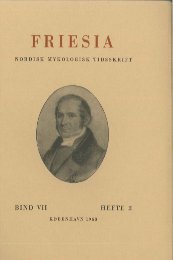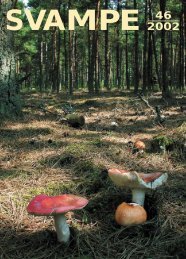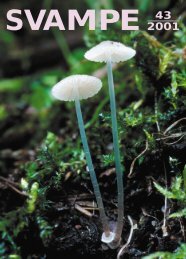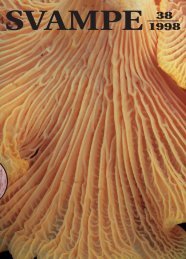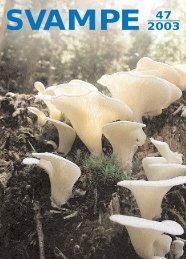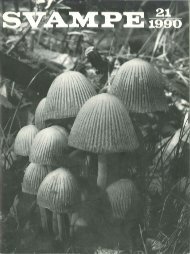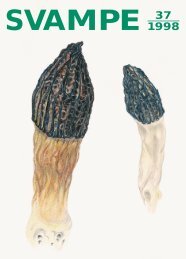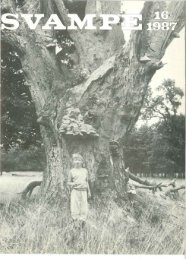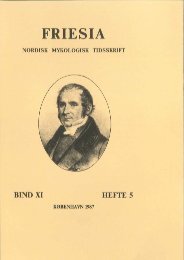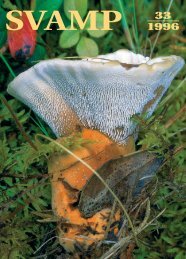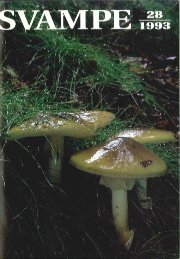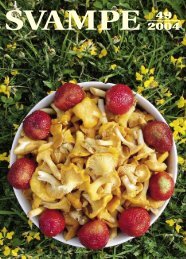Friesia X, 4-5
Friesia X, 4-5
Friesia X, 4-5
You also want an ePaper? Increase the reach of your titles
YUMPU automatically turns print PDFs into web optimized ePapers that Google loves.
- 305<br />
Fig. 3. Cenococcwm. geophilum. Sclerotia found in field No. 35 (ca. 15 X).<br />
INGE PRÆST phot.<br />
During this examination it was discovered that the soil samples<br />
contained sclerotia of Cen ococcu m geophilum.<br />
Twenty soil samples already analysed for seed content were<br />
checked for content of sclerotia (cf. Fig. 1, Nos. 1-19 and 33), but<br />
owing to the treatment given these samples during analysis for<br />
seed, it was impossible to determine the exact number of sclerotia<br />
per m''.<br />
The remaining 37 soil samples, at that time not analysed for<br />
content of seed, were examined at a magnification of 20-40 X in<br />
order to sort out the sclerotia or sclerotia-like particles (cf. Fig. 1,<br />
Nos. 20-32 and 34-57). Most of these soil samples contained a very<br />
high amount of sclerotia, and the analysis work was therefore very<br />
time-consuming, which made it necessary to divide the washed fraction.<br />
The coarse part ( > 1 mm) contained relatively few sclerotia,<br />
and half of this fraction was examined. af the fine fraction « 1 mm)<br />
- which often had a very high content of sclerotia - usually 1/16<br />
was analysed. an an average 2828 sclerotia per reduced sample<br />
and also some sclerotia-like particles were found in the 37 samples<br />
examined.<br />
At the identification of the sclerotia were used samples of Ceno-<br />
F R IESIA X 20



